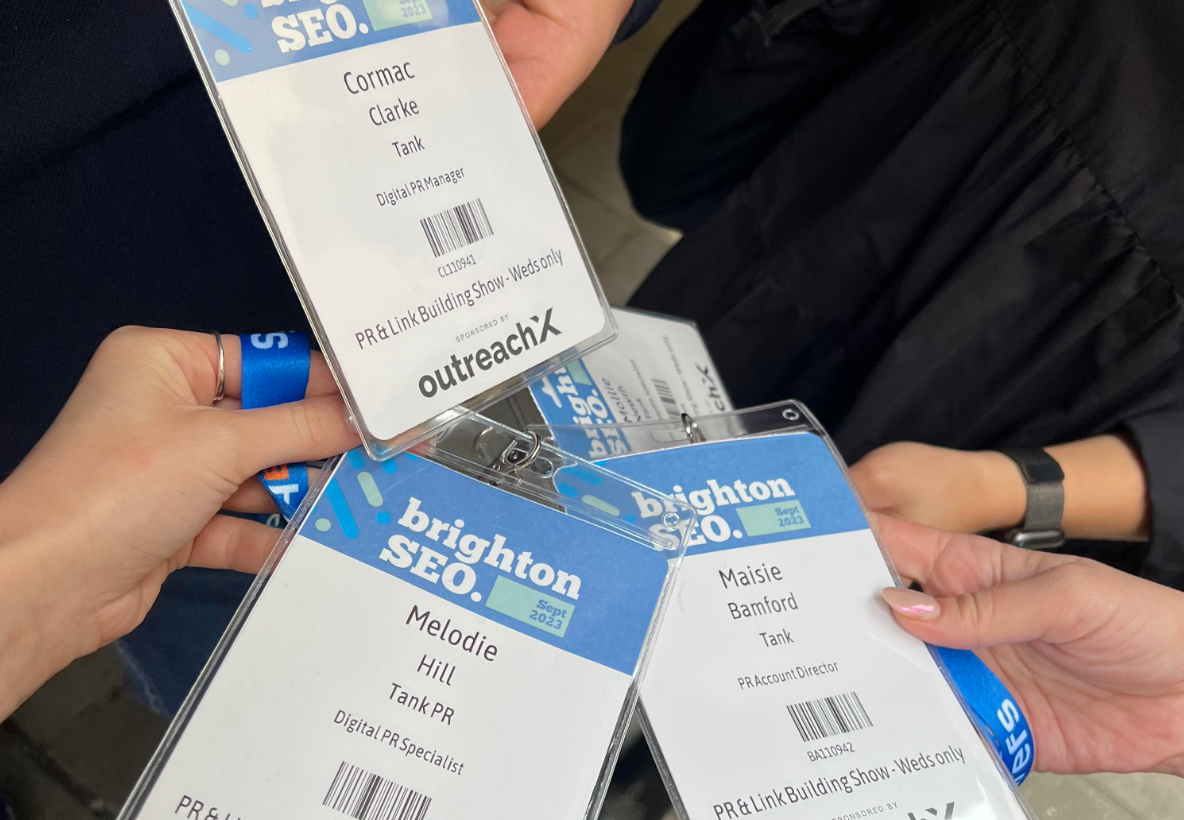Black hat, AI and being a small fish in a very big pond – How to overcome fresh, emerging obstacles in Digital PR

With journalists becoming increasingly time-poor and competition getting tougher, digital PR folk have a fresh set of challenges to overcome, as well as some darker tactics rearing their ugly heads. Off the back of this year’s BrightonSEO, we’ve been mulling over some of the key challenges for digital PR people to consider over the coming year.
Using AI in your creative process – if done right
For some in our industry, the advancement of AI has left us feeling uneasy, but AI can help with our creative process. Luke Cope’s talk at BrightonSEO’s PR & Link Building Show discussed the ways AI can be used to aid our creative processes, not take away from it.
We’ve seen some brilliant examples of AI being covered by journalists with the likes of brands including Heinz getting in on the action. AI, if done right in digital PR, can create unique engaging content that gets links. In particular, using the likes of tools such as Midjourney to create design concepts is a great way of using AI to aid creativity in your digital PR campaigns.
AI doesn’t have unlimited capabilities and the key thing to note is that when using the likes of AI tools such as Bard or ChatGPT, is to be prepared to spend the time refining your prompt.
Some tools you can use for your digital PR campaigns include:
The resurgence of ‘black hat’ tactics and what we can do about it
Digital PR is not immune to a minority using shady practices to land links. For years, the SEO industry has suffered from a set of practices referred to as black hat.
Black hat SEO refers to practices used to improve the ranking and visibility of a site on search engines in a way that violates the search engine’s terms of use/service. We’re now starting to see an emergence of similar tactics within digital PR and AI has had a big role to play in this.
Black Hat Digital PR is on the rise with more tools available to those who want to land links through shadier means. Similar to its SEO counterpart, Black Hat Digital PR looks to manipulate journalists and consumers through the media and if we aren’t careful, can become a big problem for our industry.
Back in April 2023, Julia Pugachevski, a journalist at Insider, published a story revealing she was in the midst of writing a story about one woman’s breast cancer survival, but there was just one issue – she didn’t exist.
The ‘woman’ got in touch through HARO (Help A Reporter Out) to share her story, but in reality, the entire pitch/story was AI-generated from a chatbot in a bid to land a link/get coverage in Insider. As a result, the story was, of course, scrapped and a wider piece into the encounter was published instead.
But how are brands/PRs contributing to Black Hat Digital PR?
- Disinformation for Links
- Irrelevant campaigns
- Spray, Pray & Hope
What can we do about it?
- Be aware of the tactics used
- Ensure relevancy is at the forefront of your strategy
- Refine your media lists to relevant journalists – relevancy is key
The odds of coverage? Pretty low! – Why your pitches are being ignored and what you can do to change that
There are hundreds if not thousands of digital PR practitioners across the UK, but we all have one thing in common – we’re all fighting to get our content seen in the same inboxes.
Zoe Burke, editor at the wedding planning site Hitched, focused her talk on why she’s ignoring a lot of our pitches but crucially, what we can do to get our content picked up from her and other journalists’ inboxes.
Something I was told in my first few days of being in the industry continues to stand the test of time – journalists are time-poor and receive hundreds of emails per week. A 2023 report by Muckrack found that 20% of journalists receive up to 50 pitches per week, yet journalists are writing just five stories per week. This means, for us to get our content picked up from inboxes, it needs to hit several criteria.
But why are our pitches being ignored?
- Impersonal – 25% of journalists reject pitches due to lack of personalisation (Muckrack 2023)
- Bad Timing – Over a fifth, reject pitches because they are badly timed (Muckrack 2023)
- Fake Re – Never ever a good idea
- Spamming with Emails
What can you do to get your pitches read and published?
- Personal 1:1 pitches – It isn’t a one-size-fits-all all approach
- 300 words maximum
- Received before 12pm noon
- Exclusivity
Some of the challenges we PRs will face over the next year will be known to us, others not so much. But regardless of the challenge, it’s important we keep relevancy, good ethics and personalisation at the heart of all our work.



